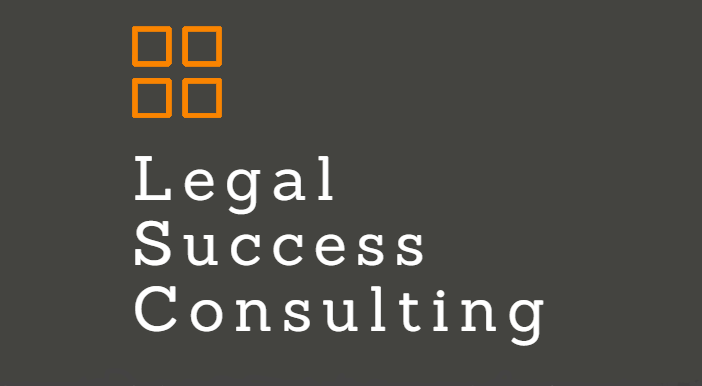Insights
You need people who care for change projects to be a success and often it’s the people that care who can break. It is something of a given that big change projects come with complexities, deadlines, long hours, high expectations and to some extent that’s what provides the challenge and perhaps attracts a certain type of person to get involved. My experience is that the best projects create a buzz and a team spirit that naturally leads to a certain level of mutual support from within the team itself. This can be every bit as effective as support from above. I have been wondering to what degree that has been missed by those who work on projects - both for leaders and project members - through this work from home phase, and also what really counts in terms of supporting people working on the most challenging projects. So, the following questions are mostly aimed at the COOs, the CFOs, the partners, and C-suites that sponsor big change projects, but they probably apply to many managers – ask yourselves : • Who is shouldering the weight of the project? Is it on one person? Are they ok? Ask them twice! Keep asking as you approach any Big Bang project deadlines. By the way – if your answer is one person – that’s the wrong answer. See next question. • Is your Steering group a trusted place where the group work as a team to check progress, make decisions, assess risks, and remove any blockers? Do they shoulder the weight? Do they act as a heat shield for the project team rather than add more heat? • Can your project leaders share? Do you allow them to make mistakes? If there are issues, is the environment such that they can put them on the table without fear? • Do you put limits on people in terms of what you let them give? They may be doing a great job but if you know they work crazy hours at what point will you stop them? Or is there no stop point? Personally, I have given my all for projects at times, and I have had my sleepless moments! Two of my projects have involved switching off the entire firms’ global Risk and Finance systems whilst the team worked 24/7 to get the new ones up. There was no fallback arrangement possible - the firm had no systemised business intake or cash until we pressed the ON button. That level of responsibility is not uncommon for such projects and although there are formal sign offs and Go/No go meetings it can still feel like ‘It’s on you’. I survived and succeeded, and I mostly look back fondly with a slightly rose-tinted view. But I had great colleagues, and I’m a bit of a sharer. The opportunity to pick up on someone struggling, to take them for a coffee or to the pub isn’t there in its usual form. So, more thoughtfulness from above to take account of this for the current times especially please, but even in more normal times, factor this into your project world. Recognise what you ask of people. Look after people, just because you should. Laurence, however, can tell you why it’s in your interest to care… -------------------------------------------------------------------------------------------- Karen has been talking about the people and the practical aspects of managing projects mindfully. It falls to me to talk about some of the more hardnosed economic benefits. So, if humanity isn’t enough for you, read on… Goodwill. Having people’s goodwill is a terrific asset. They are grateful you have been supportive and will remember it when it comes to times when they can help the business. They will carry that goodwill into the market to build your brand as a business and an employer of choice. They might, a particular risk with contract team members, also think twice about leaving your project at a critical time for that lucrative role elsewhere. I don’t mean they won’t take the offer, only that they might delay it a week or two to try and close down that particularly thorny piece of work that is on the critical path first. Respect. They will respect your approach to management because they have seen that your approach has worked for them, and this will help them be supportive of decisions in future. Respect leads to trust and trust, as Simon Sinek tells us, empowers high performance. Engagement. There is plenty of research on the benefits of employee engagement. Quality and efficiency are the ones I’ll mention here. Harvard Business Review cites Gallop as indicating a 41% reduction in quality incidents from engaged employees. Gallop, again, in 2016 reported 17% higher efficiency. Alertness. And by this, I mean the willingness to look beyond the task in hand. To take a view of the broader perspective. This is what gets your team coming back to you with suggestions for improvements rather than grinding through their daily tasks in isolation. If they see the project is misaligned, they will be encouraged to help you get it back on track. This may be even more important now that so much of our work is remote – losing some of the liminal interactions people have when they are in the same office. While I’m on the letter “A” I recall I should also have mentioned absenteeism. Engagement (see above!) is believed to reduce absenteeism by 41% (Gallop 2016 again). Teamwork. If your team members feel they are in a team that looks out for them, then they will be looking out for their team members. This extends all the way from looking out for colleagues under pressure through covering for colleagues who may be working more flexible hours to going that extra mile to make sure their colleagues hit their own project deadlines. So, what does this mean in practice? Big (and many small) projects are never going to be anything other than demanding for the people on them. There will be times with long hours, hard to meet deadlines, pressure and the challenges of things not going according to plan. You still need to get your project done well and on schedule. There will definitely be stress! That makes it even more important to be conscious of the team. Its delay and rework that are the drivers of inflationary project costs. The people on your project are the key to avoiding them. Investment in supporting those people in a mindful way is good for the individuals but the pay back for the business should also be significant. The value of hitting those deadlines when there is a complex framework of project dependencies, of staying alert for solutions to program issues and of creating a culture where team members are looking out for the success of the whole team, is material. The Mindful Business Charter provides great guidance to help you work in an open, smart, and respectful way. These are things that can be applied in program management as well as across your business as a whole. Critically, embracing this guidance should improve service quality and help drive value improvements that will enhance business success however you measure it. So even if you’re a hard-nosed program manager with a focus on the deadlines and the budget, running the project with your people in mind can help deliver a more efficient, more timely and less risky project. Karen Conway Laurence Milsted Karen and Laurence are Directors of Legal Success Consulting. Legal Success Consulting combine their finance, project, and tech skills to ensure that business benefits are at the heart of all project delivery. They champion a business-led approach to all project phases, making the joins from the strategy to the detail, and have many years of delivery experience across the client matter lifecycle in global law firms. References John Baldoni Harvard Business Review 4 July 2013 Employee Engagement Does More than Boost Productivity (hbr.org) Gallop 20 December 2016 The Damage Inflicted by Poor Managers (gallup.com) Simon Sinek Performance vs Trust by Simon Sinek - YouTube Mindful Business Charter Mindful Business Charter

Changing time recording software? - It’s all about Foundations & Finish. Which type of project are you? … 1. The Just Do It project. Perhaps another project is dependent on the change, and you need it fast. So efficient, minimalist even, but definitely safe. 2. The Credibility project. It may be the first stage of a full PMS, or other big change. You need it to go spectacularly well. So heavy on the change management and initial hypercare. 3. The Data project. LPM, pricing tools, MI platforms all need to know what people have been working on – quality of data as the key for business insight. 4. The Behaviour project. Your systems are mostly fine - why can’t lawyers just record their time properly? And as it turns out – many of them are a lot better when working from home through recent months so bank that improvement and build on it. You might be a bit of a mix and match. Whichever you are, your vendor will approach all projects with their standard methodology and rightly so. They know the software inside out, but on the business side it will be up to you to lead the project towards your particular goals. We believe the best project results are achieved when business benefits drive projects and are kept firmly in sight from beginning to end. But often project teams end up driven by system decisions and vendor methodology without the business input that leads to the best end result. You need both to get value from your investment. The true benefits of better time recording are not to be missed: - Clients that don’t dispute bills - Billing lawyers who have better data for future quotes - Associates freed from hours of reviewing narratives - And, a vastly improved understanding of your business And even if you are a Just Do It project – set yourself up such that they are achievable later The FOUNDATIONS for the best outcome lie in: - Establishing clear business objectives - Clear policy that is stated, owned and known - Data standards that support billing and analytics in multiple downstream systems - Simple process in terms of ways to work and where to go for help And the FINISH must be right: - Training that works for multiple ways of working - Thoughtful messaging that hits home with lawyers - Easy reporting that supports the right behaviours LEGAL SUCCESS CONSULTING – Why work with us? Because time recording is one of our absolute specialisms. - We have worked in law firms and selected, implemented, and owned time recording systems and policy. - We have driven successful behaviour change and met desired business objectives - We have a packaged and proven approach to the business thinking that dovetails with the vendors approach - We offer substantive support for large projects to incisive advice to help smaller projects fly - We have pride in our ‘easy to work with’ approach that would support your internal team So, whether you are a Just Do It project, a Credibility project, a Data project, a Behaviour project, or a bit of a mix and match, we provide a high value route to success.

We wouldn’t start from here. The October edition of Briefing includes HSBC and Briefing’s joint 2020 Strategy and Investment Report. For technology investment, over 50% of participants were looking to increase investment. Unsurprisingly, after all we have been through this year, the focus was on remote working solutions and Cyber but with management information, process automation and client collaboration also featuring highly. Knowing what we are doing, improving it and using tech to share better with clients have all been key spends over recent years but they become more prominent in an environment where we work remotely and rely more heavily on data systems rather than human systems for our guidance. Such tools are very visible, both within the firm and with clients, and can facilitate better strategy decisions, better operational management actions and better client relationships. This means they are saleable as investment decisions to partners while they can be added into the existing technology mix used for finance and client intake without the risk and disruption that changing those complex systems can often entail. Nevertheless, making those investments should also be a catalyst to encourage firms to look at their existing foundational systems to ensure those foundations are solid enough to bear the weight. Making sure changes are underpinned by a good data model, transparent and well understood data categorisation, discipline around data input, reported measures that are relevant and drive behaviour change and with policies, reporting and governance that make sense and are practical will enable your investments to flourish. It will prevent simply grandfathering any fuzzy data or idiosyncratic behaviours into your new model. Inevitably, this starts with people and behaviours and goes back to things like ensuring good practice around client take on, time recording and budgeting. Ideally, we would all already have perfect client and time data, lawyer adherence to clear policies and rarely troubled governance and hence can output business information and client reporting that is well understood and consistent. For those of us that don’t start from there, we work with the impact that legacy decisions and compromises have had on our processes and our data. Making everything perfect may be a bit too aspirational but making sure you are getting the most from your investment with a structured review of what you already have, is not. Ensuring your program covers elements to reduce your tolerances and to tidy up the old as well as cracking on to implement the new will save hidden cost, client dissatisfaction and enable better decisions. If you are the CFO or the business backer of systems change, then you will already know how important the foundations of data, policy and governance are to ensuring success in your hunt for the benefits. This is our space – consultants who understand the business side of the technical change. We represent you. If you want to talk about this or any of the issues you are facing with your systems projects or change programs, please get in touch. We would love to hear about your current challenges.
At times of crisis, its back to basics – People, Cash, Supplies. Emerging from crisis, its Basics Plus … where will you direct any discretionary energy? So it's still about People, Cash, Supplies – but don't lose sight of the forthcoming challenging environment - the new ways firms will be judged by clients and the improvements that can be made to quickly affect your firm's bottom line. Many projects have been put on hold or planned into the future. After all, projects are discretionary, aren't they. They take your cash, the returns are often soft and you've lived without them. Progressive leaders will be selectively bullish in reviewing their project portfolio which will be about both new technology investments, and, also, about making the most of the technology you already have. You will need all the advantages technology can give you this year and in the years to come. Here at Legal Success Consulting we have an out of the box approach to review your portfolio list of projects, and test their business value vs their cost and effort. This has been used to great effect. Is you project list: Too long? Too slow moving? Aligned to strategic business objectives? Too expensive? Too techical? Too disparate? Influenced by individual initiatives in its priority? Or is it? Trusted, well understood and easy to consume? Transparent, with alignment to firm strategies and roadmao? Properly and consistently costed? Shows key dependencies between projects? Well supported by managements who appreciate the benefits and the efforts? Our methodology allowed a Magic Circle law firm to reduce it's portfolio from >250 to <100 projects, producing an integrated project roadmap focussing on the business change needed, as well as the technology change. As well as achieving senior buy-in, the firm was provided with a high-level plan with which to manage the portfolio and an ongoing assessment methodology to allow for business evolution. Please contact us to learn more.

LSC/Intapp Blog on "Building the Foundation for a Profitable Pricing Framework during COVID-19 and Beyond" is now published. It builds on the joint webinar and covers, amongst others, the following topics; - Establishing the Pricing Foundation - Using Data to Drive Behavioral Change - Selecting the Right Pricing Technology - Building Business Agility to Meet the Moment It can be found here - https://www.intapp.com/blog_posts/profitable-pricing-during-covid-19/

Thanks to all our friends at Intapp for the chance to join their webinar series and talk about business readiness for a strong pricing framework, and how maturing pricing is a smart investment in these unusual times. The webinar can be found here - https://www.intapp.com/resources/foundation-pricing-framework-recording/ Thanks also to everybody who has watched it and been in touch. Please just drop us an email if you would like to discuss any of the things we talked about during the webinar or indeed if you would like to discuss any of the other issues you are facing with your system projects or change programs. We are here to offer advice or simply be a sounding board and would love to hear about your current challenges.
We are delighted to welcome Laurence Milsted into Legal Success Consulting. He adds a strategic layer to our project support services to law firms who are embarking on or in the midst of Finance change projects, and will work with firms on project governance, stakeholder management and aligning pricing support with business strategy. He will combine this with Non-Executive roles, Coaching and general professional services consulting. Laurence was Global CFO of Freshfields Bruckhaus Deringer for nearly 20 years and the first CFO for Baker Mckenzie’s EMEA+ region during a period of structural, technological and services change.
